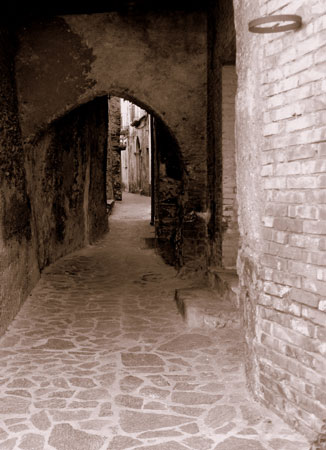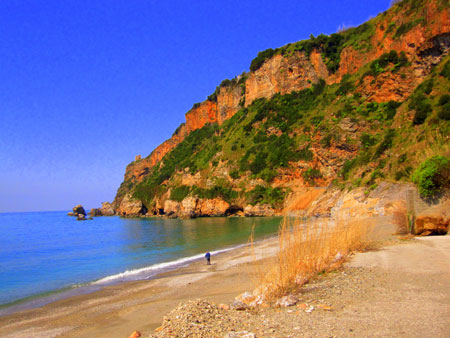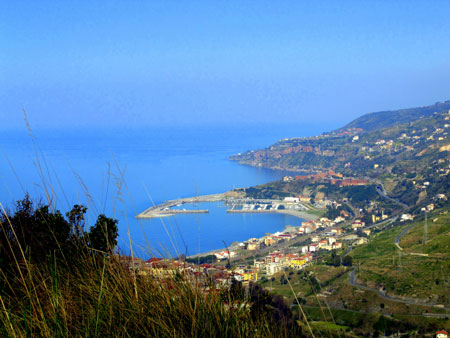Laura sent us this article to talk about her country Cetraro.
Want to know more?
Adelina told us about how to get to Cetraro by sea, today Laura talks about what to see in Cetraro in 3 days.
Well … let’s find out together!
Cetraro: a charm between sea and mountains
Of ancient origins, Cetraro was probably the first maritime city in Bruzia.
The fortified city of the 3 access gates Di Mare, Di Basso and Di Sopra, was donated by the Duchess Sichelgaita (second wife of Robert the Guiscard) to the abbot Desiderio IV Epifanio of Montecassino to ingratiate him of his good service.
The name Cetraro is due to the abundant production of cedars or lemons (lat. Citrus) that you can see in the surrounding countryside.
This 3-day itinerary allows you to visit the most beautiful places in Cetraro. At the bottom you will also find some directions on where to eat and stay overnight.
Cetraro tourist route

1st day
Arriving in Cetraro the first stop is at the Ritiro complex where the Church of S. Maria delle Grazie is located. Outside you see the Convent founded in 1912 by Sister Crocifissa Militerni: Superior of the Battistine of Cetraro (1909) and Master of Novices in Rome (1914).
As you walk towards the center you will cross via Luigi De Seta, also known today as “a via i rota”, perhaps due to the presence of the wheels of the “funeri”, on which cafes and shops now face. Then arrive at Piazza del Popolo, a favorite meeting place for the people of the city.
At the center of the square we find the Fountain of Neptune (1898), known in the popular dialect as “u giganti”, around which there are numerous complexes and buildings including the Palazzo del Trono of 1842 by the architect Augusto Rocca.
From Piazza del Popolo, taking the via Vito Occhiuzzi, reach Piazza Gino Janelli with the Church of S. Pietro or dei Cappuccini. Going down Via dei Cappuccini begins Via Roma, which was the main street of the 19th century Cetraro.
At the end of this street there is the Chiesa Matrice of San Benedetto Abate and the bell tower, the only remaining civic tower of the castrum Citrarii, already mentioned in 1540 as the the bell-ringer of S. Benedetto.

2nd day
Today we visit the fascinating historic center, full of narrow streets, arches and suggestive views.
If you walk down Via Regina Elena, which once joined the lower neighborhood of the Porta di MareS (the “Sea Gate”) with the Piazza di S. Benedetto, you will come to Largo Giuseppe Ricucci (known in dialect as “a curti”“) which was the center of the medieval Cetraro. In fact, there was the Curia Minor and the ancient plebeian church of S. Nicola, on whose churchyard until the end of the 1500s there were the meetings of the University of Cetraro.
Don’t miss a visit to the most important buildings: the courtyard of the Palazzo del Vicario., the Church of S. Nicola and the Church of S. Zaccaria.
I advise you to continue to via Regina Elena so you can reach the oldest quarter of Cetraro: that one of the Marinarìa. Residence of sailors, fishermen and workers of the Arsenale who built boats, oars and other nautical tools for the Regia Marina Napoletana until the early 18th century.

3rd day
Continuing the itinerary we start from the cliff dotted with the sublime rock called “Testa del leone” due to its shape and the Grotta dei Rizzi in the promontory of ‘Ncramata. The promontory ends in the immense rock of Acqua Perropata, a name that comes from a waterfall that once fell rich and consistent and today smaller than the upper rock.
A walk on the Lampezia beach is a must, where you’ll find the recent promenade. On the left you will see a cove with a cave, the only remnant of the cave complex called Grotta dei Santangiolesi.
This brings us to the Port of Cetraro, recently enlarged and modernized, an ideal starting point for a trip to the Aeolian Islands.
Leaving the port and continuing towards the center of the Cetraro marina, you arrive in Piazza S. Marco. Meeting place of the inhabitants of the Borgo which was built in 1919 after 5 years from the earthquake. The project boasted about twenty two-storey buildings with gardens, wide roads that flowed into the central square, a school, a church. All anti-seismic and of a vaguely Venetian taste whose traces are still present.
How to reach Cetraro
- By car: A3 Salerno-Reggio Calabria
If you are coming from the North take the exit at Lagonegro., continue on the SS18 towards Reggio Calabria, and take the exit at Cetraro
If you arrive from the South take the SS18 towards Salerno, and take the exit at Cetraro
- By train
- By plane: Lamezia Terme airport
It is about 1 hour from Cetraro and can be easily reached by train. From the center therere taxis and shuttles to/from the airport and to/from the train station of Lamezia Terme.
- By boat

Cetraro and surroundings
From Cetraro you can reach them in a few minutes:
- the famous Terme Luigiane
- the Sanctuary of S. Francesco Di Paola in 15 minutes
- la city of Diamond with its murals in 15 minutes
- in just 20 minutes you reach the mountains (up to 1060 m. above sea level)
- in about 1 hour you reach the Sila plateau with the ski slopes
- from the port you can set sail for the splendid Aeolian Islands
Where to eat and sleep in Cetraro
- Restaurant “La Vecchia Cantina” – loc. Ceramile 0982-98169
Great for tasting typical local products such as the “pitticelle i milangiani” (fried meatballs with aubergines), the “pitticelle i fiuri i cucuzza” (zucchini with pancakes), typical salami and excellent wine, all home made.
- Hotel Restaurant “La Carruba“ – loc. Gardo
The name derives from the presence in the garden of a carob tree of almost 1000 years! Among the culinary specialties are the “carrubba pizza with flame”, the linguine with reef and the spaghetti with wild fennel scent of the sea
- Hotel Restaurant “Parco degli Aranci“ – via degli Oleandri
Large swimming pool surrounded by 3 hectares of green park, with citrus and pine trees. They have a tennis court. The rooms overlook the harbor in the immediate vicinity
- Grand Hotel “San Michele“ – loc. Bosco
The pool is close to a rocky wall. They have a golf course and a farm that supplies 75% of the products consumed by the kitchen. Vineyards, orchards, vegetable fields and animal farms crown the San Michele farm
- Agriturismo “Saint Lucia“ – loc. Saint Lucia
At 2 km from the sea so green where you can taste typical products, stay at reasonable prices and enjoy a splendid sea view. You can also attend typical cooking classes. In the farm they grow olive groves, vegetables, fruit, honey, wine, oil, salami and preserves
Useful contacts
- Port Office 0982-978274 ufficiodelporto@comune.cetraro.cs.it
- Municipality of Cetraro 0982978211 www.comune.cetraro.cs.it
- Cetraro Proloco 0982/91652 www.prolococetraro.it
